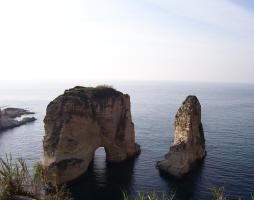 A Future for the Dead Sea Basin: Options for a More Sustainable Water Management
A Future for the Dead Sea Basin: Options for a More Sustainable Water Management
- The Dead Sea Basin has been affected by the economic and demographic changes of the last 50 years:
- a visible symptom for the degradation is that the surface area of the
Dead Sea has shrunk by about 30 %.
- this project is to establish the scientific basis for a "more sustainable
than today" water management and water-related land management in the Dead
Sea Basin.
- The research includes both the physical and social dimensions. The
approach is to synthesize the available data, to analyze the interactions
between natural resources and human activities, to project likely
development trajectories and their impacts, and to establish strategic more
sustainable development plans, and from this, to develop practical
recommendations that can be used for strategic decision making.
| Project number | ICA3-CT-2002-10019 | ||
|---|---|---|---|
| Subject(s) | |||
| Acronym | DEAD-SEA | ||
| Geographical coverage | Israel, Austria, Palestine, Jordan | ||
| Budget (in €) | 740000 | ||
| Programme | INCO MED (FP5) | ||
| Web site | http://www.deadseaproject.org/deadseaproject/ | ||
| Objectives | - Development of a GIS-based database that contains
harmonized and comparable physical, economic and social data, including
consistent sets of maps that document the spatial dimension of current
and projected water supply and demand sectors, and of land-use patterns
that drive water supply and demand. - Establishment of realistic development scenarios until about the year 2020 (with social, economic, technical and ecological constraints). - Determination and quantification of current water management system and its driving forces through a environmental, economic and social system analysis. - Establishment of criteria for essential water requirements for nature/ecosystems. - Analysis of socially, economically and environmentally sound alternatives for irrigated agriculture in arid regions. - Identification of options for sustainable tourism. - Evaluation of technical options for a more sustainable water supply and use - Establishment of a dynamic model for water supply and use under different development options (including the human dimension). - Analysis of environmentally, economically and socially more sustainable water management scenarios. - Mapping of a set of “more sustainable than today” joint development plans with a risk-benefit evaluation. -Participation of users, and dissemination of results to local/regional decision makers and users. |
||
| Period | [01/02/2003 - 31/01/2006] | ||
 you are not logged in
you are not logged in





